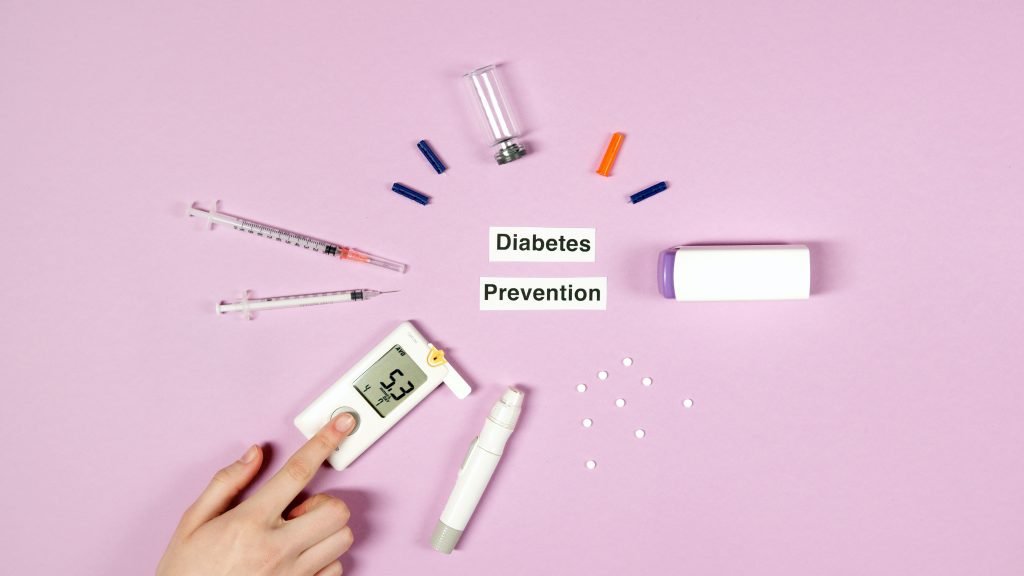
Diabetes is a chronic disease that affects millions of people in the world. If we do not control it, it can cause many serious health problems. Many reasons may cause diabetes. Some of these reasons are within our control, but others are out of it. Factors that we cannot control are related to genes, age, and others. In this article, we are going to provide you with possible diabetes prevention methods.
Below, we have listed these methods, which, if applied, will enable you to avoid the damaging consequences of diabetes.
Weight loss reduces the risk of diabetes. In a major study, researchers found that participants reduced the risk of diabetes by about 60% after losing about 7% of their weight by exercising and changing their diet.
The American Diabetes Organization advises people with prediabetes to lose weight by at least 7% to 10% to prevent developing the disease. The higher the rate of weight loss is, the greater the health benefits are.
Set a weight loss target based on your current weight. Consult your doctor about short-term goals and achievable expectations, such as losing one to two pounds of weight every week.
There are many benefits of regular physical activities. Practicing sports can help you:
Here are some of the goals for most adults to lose weight and stay healthy:

Spend 30 minutes or more doing moderate to strenuous aerobic exercises, such as brisk walking, swimming, cycling, or jogging, on most days of the week for a total of at least 150 minutes per week.
Doing resistance exercises, such as weightlifting, yoga, and gymnastics, at least twice to three times a week, can increase body strength, balance, and ability to enjoy an active life.
Getting out of long bouts of inactivity, such as sitting in front of your computer, can help control blood sugar levels. You can spend a few minutes standing, touring, or doing some light activities every 30 minutes.
Water is one of the best drinks you can drink. If you drink water most of the time, it will help you avoid high-sugar drinks, preservatives, and other ingredients that can cause diabetes.
Drinking water, instead of other beverages, helps control blood sugar and insulin levels. Sugary drinks are associated with an increased risk of type 2 diabetes and late autoimmune diabetes in adults (LADA), which is a form of type 1 diabetes that occurs in people over the age of 18.
Vegetarian foods supply the body with vitamins, minerals, and carbohydrates. Carbohydrates, along with fiber, contain sugars and starch, which are the main body’s energy sources. Plus, dietary fiber, also known as rattles or mass, also contains molecules of vegetarian foods that the body cannot digest or absorb.
Foods that are rich in fiber help lose weight and reduce your risk of catching diabetes. So try to include a variety of healthy fiber-rich foods in your diet such as:
Some benefits of fiber are:
Note: Avoid foods that contain “harmful carbohydrates” i.e., foods that are rich in sugars but low in fiber or nutrients such as white bread and pastries, pasta made from white flour, fruit juices, and processed foods containing sugars or corn syrup that contains a high percentage of fructose.

Fatty foods contain high levels of calories and should be moderated. To help lose and control weight, your diet should include a variety of foods that contain trans fats, sometimes called “beneficial fats.”
Trans fats, whether monounsaturated or multiple fats, boost healthy cholesterol levels and promote good cardiovascular health.
Good fat sources include:
Saturated fats, or so-called “harmful fats”, are found in dairy and meat derivatives. Your diet should contain a small amount of these fats. You can reduce the amount of saturated fat in your diet by eating low-fat milk derivatives, chicken meat, and lightly fat red meat.
Try to follow healthy diets instead of unnatural ones with a high glycemic index. You should also try to avoid fad or keto diets that may help you lose weight because there is little research on the long-term benefits or effectiveness of these diets in preventing diabetes.
The diet should aim at losing weight and then reach a healthy one. Healthy diets require a strategy that you can follow throughout your life. Making healthy decisions that include some of your favorite foods and habits can benefit you in the long run.
Dividing meals is a simple strategy that can contribute to good decisions about food choices and appropriate quantities. You can follow healthy nutrition by dividing your meal into the following three sections:
Vitamin D is important for controlling blood sugar levels. People who do not get enough vitamin D have a higher risk of developing all types of diabetes.
Good food sources of vitamin D usually include fatty fish, fish liver oil, and sun exposure. They can increase vitamin D levels in the blood.
Most health organizations recommend maintaining a vitamin D level in the blood, at least 30 ng/milliliter (75 nmol/L). They found that people with higher vitamin D levels in the blood were less likely to develop type 2 diabetes than those with lower levels.
Having coffee or tea in your diet may help you avoid diabetes. Researchers have found that drinking coffee on a daily basis can help reduce the risk of type 2 diabetes, as coffee and tea contain antioxidants known as polyphenols that may help prevent diabetes.
In addition, green tea contains a unique antioxidant compound called Iegglacatchen (EGCG), which contributes to reducing blood sugar from the liver and increases insulin sensitivity.
Smoking is closely linked to the risk of diabetes. Therefore, quitting smoking helps reduce this risk over time. Health professionals have found that smoking causes, or contributes to, many serious health troubles, including heart disease, blood pressure, and emphysema, in addition to lung, breast, prostate, and stomach cancers. So quitting smoking can lead to the prevention of all these diseases, including diabetes.
The American Diabetes Association recommends routine examinations in addition to diagnostic tests for all adults aged 45 and over with type 2 diabetes. The targeted categories of people should be:
Ask your doctor about diabetes prevention. Your doctor will appreciate your diabetes prevention efforts and may offer you additional suggestions based on your medical history or other factors.
Leave a comment